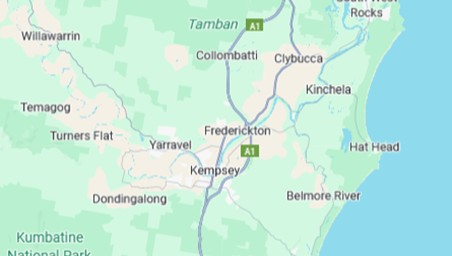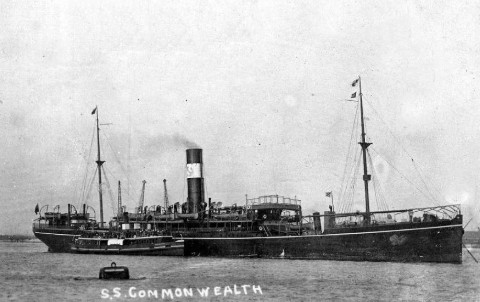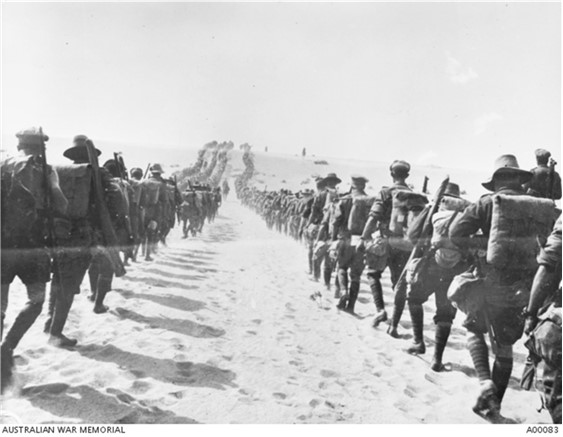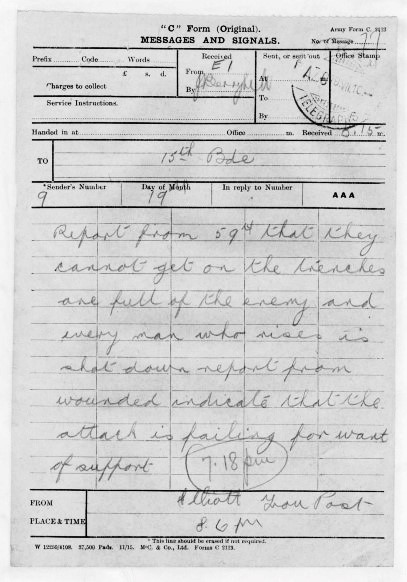Thomas Arthur LANE
Eyes blue, Hair black, Complexion fresh
Thomas Arthur Lane – A Father Lost
Can you help find Thomas?
Thomas was killed in Action at Fromelles, but his body has never been identified.
A mass grave was found in 2008 at Fromelles, a grave the Germans dug for 250 Australian soldiers they recovered after the battle. As of 2024, 180 of these soldiers have been able to be identified via DNA testing.
We welcome all branches of his family to come forward to donate DNA to help with Thomas’ identification.
If you know anything of contacts for Thomas in Australia or England, please contact the Fromelles Association.
See the DNA box at the end of the story for what we do know about his family.
Early Life
Thomas Arthur Lane was born on 7 July 1869 on the Macleay River in New South Wales, into one of the district’s pioneering families who helped shape the early settlements of the Macleay and Nambucca regions.
Thomas’ parents were Thomas Lane (1836–1879) and Christiana (Kitty) Read Nance (1844–1912). His paternal grandparents, John Lane and Mary Bickley (Berckley), emigrated from England, while maternal grandparents, Thomas Nance and Elizabeth Job, came from Penzance. The Lanes and Nances families were known for their resilience, farming skills, and strong faith. When Thomas’ uncles Edwin and John Lane were moving north, their schooner was wrecked south of Newcastle, forcing them to walk barefoot to safety. Then in 1864, floods swept away their crops and homes.
Despite these setbacks, they rebuilt their lives, cleared dense scrublands, and established farms along the Macleay river, firmly cementing a reputation for hard work and community service. Thomas’ uncle Henry Ivey Lane became the first schoolteacher at Macksville, served on both the first Bellenger and Nambucca Shire Councils, and established the first sawmill in Macksville. Three Lane brothers married three Nance sisters, creating deep roots in the region.
Thomas was one of eleven children born to Thomas and Kitty Lane:
- Mary Bickley (1864–1924)
- Edwin Arthur (1865–1867) died infancy
- Lilas E (1867–1944)
- William Ivey (1868–1944)
- Thomas Arthur (1869–1916) KIA Fromelles
- Leonard Nance (1872–1877) died age 5
- John Erdly (1873–1919)
- Charles Andrew (1875–1947) – became Mayor of Kempsey
- Frank Nance (1877–1877) died infancy
- Clara Minnie Lane (1878–1947)
- Henry Lane (1879–1879) died infancy
Challenges for Thomas’ immediate family continued. When Thomas was 8, his 5 year old brother died and then when he was 10, his father passed away. Kitty and the older children had a lot on their hands. Family difficulties continued when Thomas was in his 20’s. In January 1893, the family home in Belgrave Street, Kempsey, was set on fire by an unknown arsonist and then in 1894 Kitty was declared bankrupt, a reflection of the ongoing financial struggles faced by farming families despite their decades of toil and perseverance. His mother, known affectionately in the community as Aunty Kitty, died in 1912. On the more positive side, Thomas married Charlotte Adeline Perrin on 16 May 1900 at Narrabri, New South Wales. Charlotte had been twice widowed before marrying Thomas and brought with her a family from her previous marriages. Together they had two sons:
- Thomas Arthur Leonard Lane (1901–1935), born at Port Macquarie. He moved to Melbourne but died in tragic circumstances aged 33, in 1935.
- Eardley Douglas Nance Lane (1907–1958), born in Kempsey, who later enlisted in the Second Australian Imperial Force during World War II, Service Number VX437.
By 1915, Thomas was working as a cordial maker with his family living in suburban Melbourne, at the corner of Malvern Road and Osborne Avenue, Gardiner. The boys would have attended Gardiner Central School on Osborne Avenue.
Off to War
With the ‘doubling of the AIF’ as it expanded from two infantry divisions to five, major reorganisations were underway at the 40,000-man training camp at Tel-el-Kebir, about 110 km northeast of Cairo. On 23 February 1916, Thomas was first allotted to the newly formed 57th Battalion and then on 15 March to the 59th Battalion. Approximately half of its recruits in the 59th came from the 7th Battalion Gallipoli veterans and the other half from reinforcements, predominantly composed of men from rural Victoria.
After training at the large camp at Tel el Kebir, Thomas’ unit was sent on a two+ day, 50 km march in thermometer-bursting heat across the Egyptian sands from Tel-el-Kebir to Ferry Post, near the Suez Canal. Prior to marching, only ½ pint of water per bottle was available. A significant challenge for a 45 year old man. Source- AWM4 23/15/1 15th Brigade War Diaries Feb-Mar 1916 p 6
A month later they were relieved and headed for the camp at Duntroon Plateau. It was not all work, however. A 5th Division Sports Championship was held on 14 June, which was won the by the Thomas’ 15th brigade. The very next day they began preparations for heading to the Western Front. The 59th departed aboard the Kinfauns Castle from Alexandria on 18 June 1916. After a brief stop in Malta, they disembarked at 7 AM in Marseilles on 29 June. By 10 PM they were on a train headed for Steenbeque, 35 km from Fleurbaix in northern Frances, arriving on 2 July.
This area near Fleurbaix was known as the “Nursery Sector” – a supposedly relatively quiet area where inexperienced Allied troops could learn the harsh realities of Western Front trench warfare against the Germans. But the quiet times and the training period did not last long. Training continued, but with a higher sense of urgency, and it now included the use of gas masks and learning to deal with the effects of large shells. The move to the front continued. On 9 July they were in Sailly sur la Lys, just 1000 yards from the trenches.
The Battle of Fromelles
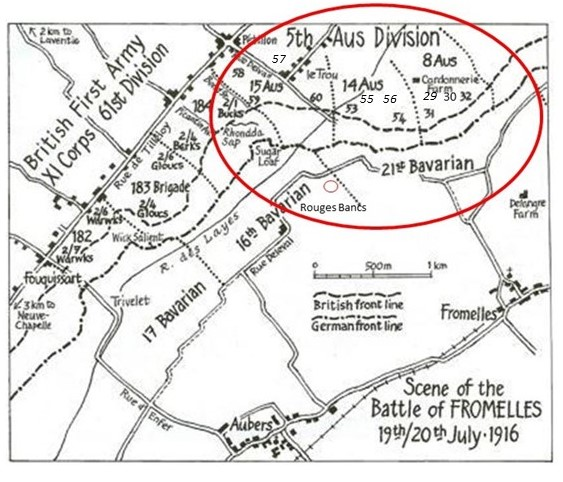
The battle plan had the 15th Brigade located just to the left of the British Army. The 59th and 60th Battalions were to be the lead units for this area of the attack, with the 58th and 57th as the ‘third and fourth’ battalions, in reserve. The main objective for the 15th Brigade was to take the trenches to the left of a heavily armed, elevated German defensive position, the ‘Sugar Loaf’, which dominated the front lines. If the Sugar Loaf could not be taken, the other battalions would be subjected to murderous enfilade fire from the machine-guns and counterattacks from that direction. As they advanced, they were to link up with the 60th battalion and the British on their flanks.
The main attack against the Sugar Loaf position was planned for 17 July, but it was delayed due to bad weather. On 19 July, Zero Hour for advancing from their front-line trenches was to be 5.45 PM, but the Germans knew this attack was coming and were well-prepared. They opened a massive artillery bombardment on the Australians at 5.15 PM, causing chaos and many casualties. A fellow soldier, Bill Boyce (3022, 15th Brigade, 58th), summed the situation up well, “What have I let myself in for?”
Source - Australian War Memorial Collection C386815
Their attack on the German lines began at 5.45 PM on the 19th. The 59th went over their parapet in four waves at 5 minute intervals but then laid down to wait for the support bombardment to end at 6 PM. A Company and Thomas’ B Company were in the first two waves, C & D in the next two. There was immediate and intense fire from rifles and the Sugar Loaf machine guns. As documented in the messages sent back to HQ just after the attacks began:
“cannot get on the trenches as they are full of the enemy”
“every man who rises is shot down”
“‘they were enfiladed by machine guns in the Sugar Loaf and melted away”

The British 184th Brigade just to the right of the 59th met with the same resistance, but at 8.00 PM they got orders that no further attacks would take place that night. However, the salient between the troops limited communications, leaving the Australians to continue without British support from their now exposed right flank. The official reports indicate advances were limited, but a witness said he saw Thomas wounded while 200 yards from the Australian lines (ed – the actual distance is unreliable, but this does put Thomas at the front of the advance).
Other individuals’ reports suggest that some Australians did reach the German parapet. However, with little support being available the Australians had to drop back. The attack was ended early on the morning of the 20th. At the 8 AM roll call, out of a battalion of about 1000 soldiers, 4 officers and 90 other ranks reported in. While there was no cease fire after the battle, parties did go to No-Man’s Land to bring back wounded soldiers, with over 200 were recovered on 20 July. The initial toll on the 59th was 26 killed or died of wounds, 394 were wounded and 274 were missing – 694 soldiers.
Ultimately, 334 soldiers were killed in action or died from their wounds from this battle. 239 of the soldiers were unidentified. To get some perspective of the battle, when Charles Bean, Australia’s official war historian, attended the battlefield two and half years later, he observed a large quantity of bones, torn uniforms and Australian kit still on the battlefield.
Thomas’ Fate
Thomas was among those who did not return. Initially reported missing, later witness statements confirmed his fate. Thomas was among those who did not return. Initially reported missing, witness statements later confirmed his fate. Private Percy Wickham (3515, 59th Battalion, B Company) saw Thomas wounded:
“The last that I saw of T.A. Lane was wounded in hip about 200 yards from our trenches. I was next to him when he got wounded; that was the last I saw of him. He was tall, about 43 years of age. He was the cook for 59 Batt. B Coy. Had a large moustache with thin face. There were two T. Lanes in our tent so I think that T.A. Lane was the one that was missing.”
Arthur Wickham (4914, 59th Battalion, B Company) confirmed his brother’s sighting:
“My brother Pte. P. Wickham 3515, B. Coy., saw T.A. Lane wounded at Fromelles on July 19th 1916 during our attack.”
A third statement by Corporal Leslie A. Hall (5389, 59th Battalion) later confirmed Thomas’ death:
“He was killed. I saw him lying dead and I took his disc and brought it in.”
While killed near the Australian lines, Thomas’ body was never recovered.
After the Battle
Thomas was initially listed as missing in action, while the Army conducted extensive searches before formal declarations of death were issued. For over a year, his family waited for news, hoping he might have been taken prisoner or was recovering in a hospital. It was not until 29 August 1917, after a Court of Enquiry in the field formally confirmed him being ‘killed in action’. Thomas has no known grave. It is believed he remains are between the lines where he fell in No Man’s Land. For his family, his loss was profound.
His wife, Charlotte, now widowed for the third time, was left to raise their two sons alone, Thomas Arthur Leonard and Eardley Douglas Nance. The grief endured for decades, with memorial notices placed in newspapers remembering both Thomas and his eldest son who died in 1935. In 1936, Charolette placed a memorial notice in The Age to mark the anniversary of his son Thomas Arthur Leonard Lane’s death and poignantly remembering both father and son:
LANE. – In loving memory of my dear son Thomas A. L. Lane, who died on 12th June 1935, result of accident; also Pte. Thomas A. Lane, loving father of the above, killed in action in France, 19th July 1916. Fondest memories.– Inserted by C. A. Lane and family, South Melbourne.
Thomas is remembered as a devoted husband and father who answered his country’s call, despite being 45 years old.
Thomas is commemorated at:
- VC Corner Cemetery Memorial, Fromelles (No. MR 7)
- Kempsey War Memorial, a testament to his roots in the Macleay district and his family’s pioneering legacy
- Australian War Memorial Roll of Honour, Panel 168
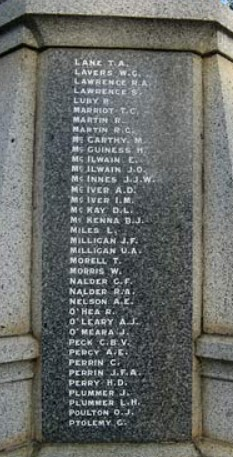
Finding Thomas
After the battle, the Germans recovered 250 Australian soldiers and placed them in a burial pit at Pheasant Wood. This grave was discovered in 2008 and since then efforts have been underway to identify these soldiers by DNA testing from family members. As of 2024, 180 of the soldiers have been identified, including one soldier of 239 unidentified soldiers from the 59th Battalion.
A male donor has come forward, but we welcome all branches of Thomas’ family to come forward to donate DNA to help with his identification. If you know anything of Thomas’ family contacts in Australia or England, please contact the Fromelles Association. We hope that one day Thomas will be named and honoured with a known grave.
Please visit www.fromelles.info to follow the ongoing identification project and Thomas' story.
DNA samples are being sought for family connections to
| Soldier | Thomas Arthur Lane (1869–1916) |
| Parents | Thomas Lane (1836–1879) and Christiana Read Nance (1844–1912) |
| Siblings | Mary Bickley (1864–1924) | ||
| Edwin Arthur (1865–1867) | |||
| Lilas E (1867–1944) | |||
| William Ivey (1868–1944) | |||
| Leonard Nance (1872–1877) | |||
| John Erdly (1873–1919) | |||
| Charles Andrew (1875–1947) | Mayor of Kempsey | ||
| Frank Nance (1877–1877) | |||
| Clara Minnie (1878–1947) | |||
| Henry (1879–1879) |
| Spouse | Charlotte Adeline Perrin (1869–1939) |
| Children | Thomas Arthur Leonard Lane (1901–1935) | ||
| Eardley Douglas Nance Lane (1907–1958) | WWII Service VX437 |
| Grandparents | ||||
| Paternal | John Lane (1793–1883) and Mary E Bickley/Berckley (1793–1861) | |||
| Maternal | Thomas Nance (1805–1883) and Elizabeth Job (1806–1888) |
Links to Official Records
Seeking DNA Donors

Contacts
(Contact: carla@fromelles.info or geoffrey@fromelles.info).
(Contact: army.uwc@defence.gov.au or phone 1800 019 090).
Donations
If you are able, please contribute to the upkeep of this resource.
(Contact: bill@fromelles.info ).

